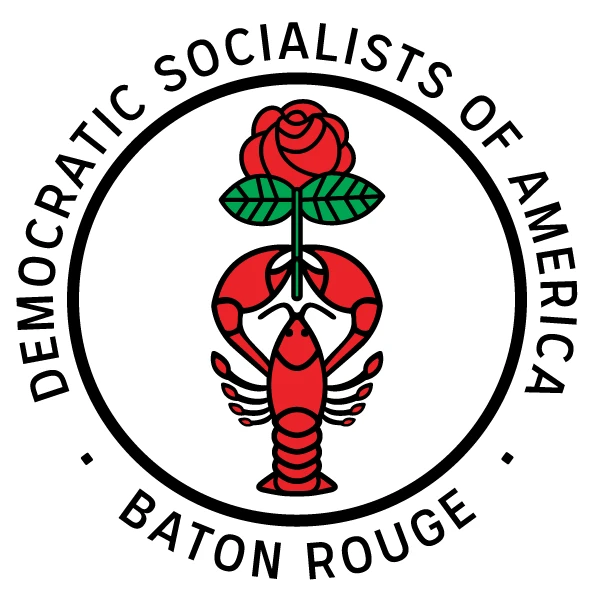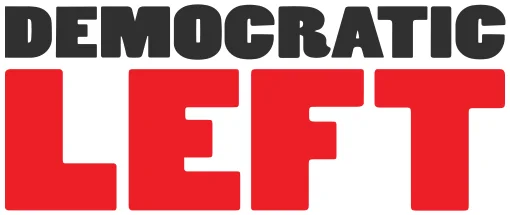

Experience of the Italian Internationalists
A reflection on Lotta Comunista's organizing and an interview with an activist.
The post Experience of the Italian Internationalists appeared first on Democratic Left.
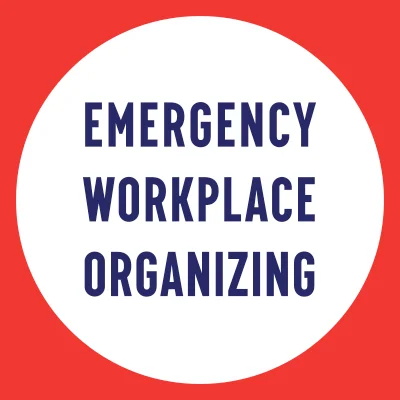

Immigrant workers belong in unions
Building a union means including everybody. Here are tried and trusted tips for reaching out across language and other cultural barriers.
The post Immigrant workers belong in unions appeared first on EWOC.
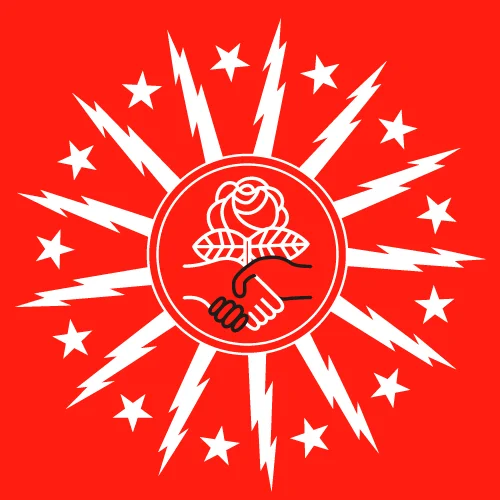

Buffalo DSA Stands with SNAP Recipients and Condemns Capitalist Greed
Like many concerned workers, community advocates, and neighbors, Buffalo DSA Steering Committee is disgusted by the impending delay of SNAP benefits on Nov. 1. 42 million Americans, including an estimated 200,000 Western New Yorkers, will face unprecedented food insecurity.
This is a public health and safety crisis, and an attack on the working class. Wages have stagnated, and workers face unmitigated exploitation and wage theft, yet the cost of living continues to rise unchecked. Capitalists continue to hoard resources, leaving only scraps for poor and working people. The ruling class then spews baseless propaganda that we should blame each other–immigrants, LGBTQ+ people, or other marginalized workers, in particular–thus engulfing our class in an unending culture war.
We are strongest when we stand together against the true enemy–the capitalist class. We must organize and act, together, as a united working class.
What does this mean? We must implement both short- and long-term approaches to this impending, immoral hunger crisis. In the immediate term, the Buffalo DSA Steering Committee commits to both monetary and material contributions to organizations doing critical work on the ground in Western New York. We will also share resource guides with both chapter members in need and the greater community. Finally, we encourage members who are physically and financially able to contribute to mutual aid initiatives that uplift their local neighborhoods. Beyond this, we must harness the energy we have to aid our neighbors in the short term, by committing to long-term struggle against all who continue to oppress us. Community care and nonprofit support are not enough to defeat the depths of this crisis–only a democratic socialist state with a destigmatized social safety net can tackle issues of this magnitude. When we organize toward this aim in our apartment buildings, at work, and beyond, we outnumber the ruling class and their sinister lobbies. We must use mass, collective power to demand our taxes go toward essential services and food for all, instead of war crimes and authoritarian states abroad. Ultimately, the power we harness through organizing for our demands will help us build a truly democratic political apparatus independent of both capitalist parties, leading us to the effective government we deserve.
This multi-front fight does not happen in solitude, nor does it happen overnight. If SNAP benefits are restored at this moment, we still know the Trump administration will find new games to play with our lives again. We must create organizing networks and durable infrastructures of support as the working class. As a democratic socialist member organization, DSA provides this political home for any and all who wish to learn the essential skills we need in the uncertain times ahead.
–
If you need help in the coming days and weeks, see the following pages for a non-exhaustive list of resources.
Buffalo Community Fridges
A local network of community fridges available to take what you need, and leave what you can. Most food items are accepted here, with the exceptions of raw meat, alcohol, and catering trays. All home cooking should be labeled with ingredients and dietary notes, and packaged separately. Note that the 257 East Ferry fridge has recently closed, but all other fridges remain open.
- Locations:
- Buffalo Love Fridge (45 Jewett Ave)
- Big Herk (167 Herkimer Street)
- Merriweather Library (1324 Jefferson Ave, limited to operating hours)
- Delevan Grider Fridge (877 E. Delevan Ave, limited to operating hours)
- Groundwork Market Garden Fridge (1698 Genesee St.)
- Gloria J. Parks Fridge (3242 Main St.; near UB South)
- Resource Council of WNY (347 E. Ferry)
- ACME Fridge (1848 Clinton St)
- NY4BDMA Fridge (637 Walden Ave)
WSCS Provisions 139 Pantry | 44 Breckenridge, 14213 (entrance faces Niagara St.)
Near West Side/Grant-Lafayette/Black Rock areas. Open Tuesdays, Wednesdays, and Thursdays. This pantry is not able to accept fridge or frozen foods from non-commercial sources.
Milligan’s Food Pantry | 4th floor, Campbell Student Union (Buff State) Resource for Buff State students in need of food. Open Mondays, Tuesdays, Thursdays, and Fridays. Student ID required.
Town Square Food Pantry | 2710 N. Forest Rd (Amherst/Getzville/Williamsville) Pantry near UB North, in the close vicinity of student housing.
Seneca Babcock Food Pantry | 1168 Seneca St. | 716-822-5094
Near South Buffalo/Babcock/Larkin areas.
Buffalo Urban League Pantry | 86 Pine St. | 716-854-7625
Inside the Clemmon H Hodges Community Center. Near Perry/Old First Ward/Downtown areas.
Buffalo River Food Pantry | 62 Republic St. | 716-856-8613
Inside Old First Ward Community Center. Near Old First Ward/Perry/Downtown areas.
Belle Center Food Pantry | 104 Maryland St. | 716-845-0485
Near Lower West Side/Hispanic Heritage District/Allentown areas.
FeedMoreWNY
A county-wide food nonprofit that offers pantry options, including a mobile food pantry, or meal delivery for those with mobility limitations.
Emergent needs? Contact Erie County DSS at 716-858-7239, or dial 2-1-1. Tell the operators you are looking for a pantry, meal delivery, or groceries today; you will then be referred accordingly.
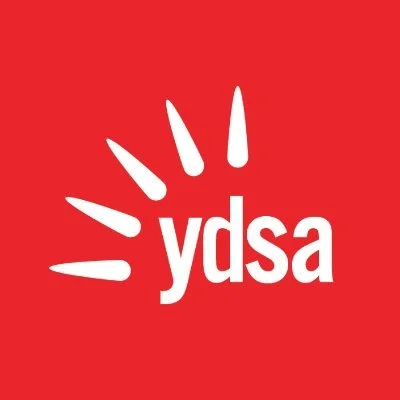
Activist Comics #1: Enlightened Centrist
The post Activist Comics #1: Enlightened Centrist appeared first on YDSA.


Endorsement: Danny Nowell
DSA is proud to endorse Danny Nowell, running for Carrboro Town Council.
Danny is an incumbent seeking re-election to continue leading the region by example. During his first term, council convened a Community Safety Task Force, began revising their Land Use Ordinance, and brought a suit against Duke Energy for its role in climate deception.
Danny is hoping to continue increasing housing supply, improving connectivity, and re-imagining public safety.
Danny is a member of the NC Triangle Democratic Socialists of America.

Who are our other candidates?
DSA’s Nationally-endorsed socialist candidates are running for local office in Washington, Minnesota, Colorado, Michigan, New York, New Jersey, Maryland, and Massachusetts!
Our candidates are incredible fighters for the working class, championing rent stabilization and higher minimum wages, while also protesting ICE’s human rights violations.
This year, we launched a rotating fundraising slate and held phonebanks to foster cross-chapter solidarity. And we’ve raised over $100,000!


Towards a Presidential Platform
As this dreadful police state bears down on us, there are still faint glimmers of hope. One of the most promising is the Democratic primary win for New York City’s mayoral race by long-time DSA member Zohran Mamdani. This victory, somewhat surprising given his low polling early in the race, has put explicit democratic socialist executive power on the table for the first time in decades, in a central hub of Wall Street capital and a center for international finance. Simultaneously, massive crowds have rallied behind Bernie Sanders and Alexandria Ocasio-Cortez, demanding a future worth living in. As Bernie’s clear protege, it is quite possible that AOC will run for president in 2028, inspiring millions who view her as the last best chance for social progress in America. Now, DSA’s task is to make sure that this popular energy is channeled into a lasting political project—not crushed or coopted as it was in 2020 and 2024 for a decrepit Democratic establishment.
At our recent 2025 convention, DSA passed two separate resolutions that commit the organization to exploring a run for president in 2028. It also committed us to the task of building an independent socialist party. If we want to make these dreams a reality, however, we have two strategic imperatives: first, we need to draft a democratic socialist presidential platform – DSA’s vision for how to use the presidency to fight for socialism in our lifetime. Second, we must begin our intervention in the 2028 presidential primary by running our own candidate, a bold DSA cadre candidate, even if that candidate eventually drops out and backs a figure like AOC for the general.
Are we up to the task? Have faith, comrades! It’s reasonable to feel small next to the scale of the problems that haunt us. Yet in DSA, we have real strengths that we can continue to develop: vision, commitment, and continuity. When elections end and the cameras leave, we are the ones who keep the struggle alive, who stay rooted in our communities and refuse to bow down to Democratic elites. They may have the name recognition, but we have a lasting organization that can inspire a new kind of mass movement and hopefully, a broader national presidential agenda to go along with that sense of commitment.
Rallying the Masses
This isn’t about winning the first time we run our own independent candidate for the highest elected office in the country. It’s about preparing the US working class for a revolutionary conquest of state power. The crucial reality is that the U.S. Constitution is already dead under Trump’s autocracy, which itself is a result of decades of creeping oligarchy. With the extreme disparities in Senate representation, the hideous influence of money in politics, and all the chaos and confusion ahead, it’s very unlikely that we’ll ever win a clean trifecta of the presidency, House, and Senate. Even Lincoln wasn’t that lucky when his insurgent Republican Party first took the presidency in 1860.
Rather, we’ll sweep to power using presidential politics to help trigger an avalanche of working class struggle, and rip up the old rulebook. It’s about using electoral campaigns for political office to attract support and to agitate the working class. Alongside the electoral realm, we will use every other tool available: strikes, demonstrations, mutual aid associations, and so on. Our “organizer in chief” presidential campaign will also encourage socialists to build up their own media, like the mass livestreams that Bernie Sanders pioneered or Zohran Mamdani’s masterful TikTok videos. We can be certain the cable news pundits won’t be kind to us, and it’s high time we found ways to counter their propaganda, and to cultivate peoples’ questioning of the status quo into something more enduring and focused!
Imagine our candidates throwing down on the picket line with striking workers; holding listening sessions outside VA hospitals and rail yards, organizing militant public health initiatives to subvert abortion bans and defend transgender care. Wherever we find organic working class leaders, we funnel them right into the pipeline to our People’s Cabinet. In our movement, today’s train conductor is tomorrow’s presidential nominee! The presidential election is just an audition for power—a way to build the muscle, the vision, and the network that the working class needs to actually govern when the time comes.
A Platform of Revolution
Before we even begin to select a potential candidate, we would need to determine what we’re running them for. Steps and patience are still necessary. We start by drafting a “Democratic Socialist Presidential Platform”: a prepared list of tasks that we would initiate on day one of a socialist presidency. Through rapid executive action, our intent would be to mobilize the working class to dismantle the capitalist state as it currently exists and win peace, homes, and healthcare for all.
Our agitation around this document would be more than a protest campaign. It’s a platform campaign spanning countless election cycles, not just one, in a nationwide struggle for power. Instead of beginning with a personality, we can start by revisiting DSA’s existing program, refining it together through democratic deliberation. The following could be inspiring commitments for our platform:
- Appoint a People’s Cabinet of working class organizers, prepared to take power as a revolutionary workers’ government. Such organizers would be recruited from across the country.
- Redeploy federal resources toward massive climate resiliency projects, housing, and healthcare for all, regardless of locality
- Cut all federal support for genocide and the Israeli war machine, instead supporting Palestine’s freedom
- Arrest all war criminals and genocide collaborators in the US for prosecution in international courts.
- Arrest all collaborators in Jeffrey Epstein’s pedophile network.
- Recognize the self-determination of all colonized and indigenous nations fighting global capitalism and U.S. imperialism
- Declare a public health emergency to restore abortion rights and gender-affirming care nationwide, deploying federal resources to ensure universal access.
- Nationalize public infrastructure, from railways to energy grids, under democratic control
- Welcome climate refugees and declare universal amnesty for immigrants
- Liberate political prisoners from both federal and state incarceration
- Reorganize the armed forces into a democratic people’s army
- Convene a Popular Assembly, elected by nationwide proportional representation, to rewrite the US Constitution and declare a democratic socialist republic
The agenda will lead, not a personality. Our socialist vision will be spearheaded by charismatic people with a strong sense of responsibility to the movement, ready to build a permanent constituency for socialism. As we boldly articulate DSA’s vision for the country and the world, we will become infinitely more powerful.
The DSA Presidential Convention
With a platform agreed upon, we’ll be ready for the next step of nominating our ticket. Those who will be responsible for using electoral politics to spread our socialist movement across the country won’t be nominated through a backroom negotiation. Instead, we can hold a DSA presidential nominating convention. Anyone would be free to run for the nomination, as long as they pledge to implement the DSA Presidential Platform. DSA could develop democratic procedures for selecting a nominee and hold livestreamed in-person debates for all declared candidates to earn the DSA endorsement and full backing. Such debates will encourage healthy discourse in our organization and push all of us forward politically
But how do we find good candidates? We can do this by thinking outside the box! We don’t necessarily need a governor, a member of Congress, or even an existing DSA elected. It would be amazing to win over a national politician like Rashida Tlaib or Cori Bush, but we could also pick a DSA chapter leader, a national co-chair, or a rank and file union activist. We could draft a local elected like Richie Floyd, a socialist schoolteacher like Jeremy Gong, or even a plain-spoken left wing academic like Matt Karp. The nomination process will give us ample opportunity to observe the candidates in action, picking one who is up to the task of building a socialist constituency.
Then, we could bring in other figures to boost the ticket. Imagine Zohran Mamdani, running for Congress on a nationwide slate of democratic socialist firebrands. These candidates will be backed by the strong campaigns that are necessary to win, build DSA and spread consciousness about our program. Downballot campaigns will get a boost when the presidential candidate barnstorms their district to help get their name out, and local elected officials will in turn have a part to play in boosting the presidential ticket.
Running for a collective presidency would give us incredible resilience. If we spread name recognition across the movement, we can avoid getting trapped with a single perennial candidate like Bernie, Corbyn, or Melénchon. Instead, we can learn from figures like former Mexican president Andrés Manuel López Obrador (AMLO) and his successor Claudia Sheinbaum in Mexico, who have used their groundbreaking electoral campaigns to build up permanent institutions like Morena, a mass party of the Mexican left. Bernie and AOC seem to be building support for their progressive vision through their “Fighting Oligarchy” tour, but their distance from DSA limits their ability to cohere an organized mass base for their political program. Their instinct has always been to center their personalities instead of trying to create a new voter identity or a partylike organization.
If we nominate our candidates early—perhaps in 2026—we’ll have plenty of time to start forging a socialist voter identity as 2028 approaches. We can begin by running in the national Democratic primary with a stridently independent campaign, making it clear that we will never endorse the establishment if they steal the nomination or continue to ignore working class grievances. Our candidate’s orientation would still be to antagonize masses of typical voters, including the many Democratic party voters who have become increasingly frustrated with the party, and to offer them a true alternative to the GOP. If the time seems ideal, we can continue to the general election as an independent, on a third-party ballot line, or perhaps even as a write-in candidate, taking with us support from inside the primary. Every step of the way, we will assess support for socialism and continue the long overdue process of cultivating a pro-socialist constituency.
If AOC enters the primary, many comrades will feel that the only responsible choice is to rally behind her immediately. For many Americans, she is the most familiar figure to emerge from Bernie Sanders’ movement, their entry point to “democratic socialism.” Yet there is a hard truth that DSA sometimes struggles to address: AOC’s approach is rarely insurgent and has in fact become increasingly conciliatory in recent years. In 2024, she went so far as to go on the DNC stage and claim with a straight face that Kamala Harris“[works] tirelessly for a ceasefire in Gaza”—all while Harris groveled to Biden’s killing spree and promised the “most lethal” military in the world. More recently, AOC voted against a measure to slash funding for Israel’s Iron Dome, followed by reasoning that itself sounded contorted and unclear.
AOC’s strategy is compromised by her commitment, however well-intentioned in some circumstances, to staying in the good graces of a party leadership that is utterly hostile to progress and its own voter base. That is not a personal attack, but a political reality with consequences. If DSA plays “follow the leader” and tails a left-Democratic presidential candidate, we will forfeit any ability to push beyond the limits they accept. We should never forget what happened in 2020: when Bernie Sanders capitulated to Biden early on in the name of “party unity,” his massive volunteer army was left in despair and disunity. When summer came, millions rose up in the George Floyd rebellion, but they had no real political leadership—no defiant presidential agitator who could guide their righteous fury into a permanent resistance. That tragedy could repeat itself in 2028 if AOC surrenders to the establishment, all while ICE tramples more families into the ground.
We can welcome AOC into the field. We may even consider forming a united front of some kind with her as the primaries unfold—if she makes significant concessions to the DSA platform, and we retain our own independent voice. Even from a position of “critical support for AOC,” we could continue to build a constituency around DSA’s unique vision and stay completely hostile to establishment Democrats. If she drops out and endorses an establishment primary winner, we must not follow her. A revolutionary campaign must be prepared to go much further than AOC will, because the US working class deserves more than a fleeting populist resistance: it demands an enduring socialist opposition.
With a boldly independent socialist campaign, we will answer working people’s hunger for a real alternative. We’ll be putting forward our own agenda, unfiltered by the expectations of the Democratic party establishment. This strengthens our leverage and puts pressure on the entire political system. Ironically, this may even bolster AOC’s position within her party by showing the establishment that there’s a far more dangerous option than her. In the short term, that too would be in our favor, with AOC forced to concede to some of our more liberatory demands, all the while we carry on developing our independent sources of power, electoral or otherwise. DSA’s strength lies not in our proximity to progressive celebrities, but in our capacity to organize working-class people around a shared vision for a better society. All strategies, including the electoral, proceed over from this principle.
The Hard Road Ahead
As our new National Political Committee builds on our commitment to building a socialist party, it should begin planning for a groundbreaking presidential campaign to fight for “socialism in our lifetime.” Across the country, DSA members increasingly understand that contesting the presidency is vital to our success as a movement. The greatest challenge ahead is making sure our presidential intervention is bold, inspiring, and courageously independent.
If DSA can come together around this vision, we will be taking a considerable leap of faith. It requires confidence in socialism as a movement, as an organization, as a concrete project worth fighting for. Is it actually possible for socialists to rise to power in the United States? If we don’t start to believe it ourselves, no one else ever will.
If there’s one thing we can draw hope from, it’s the fact that all the old release valves are breaking apart. The Democratic Party has never been weaker and more decrepit. If we seize this moment with unrelenting ferocity, we can emerge with the independent movement of our dreams. The key to all of it is developing our vision through a presidential platform, and then running a candidate who is willing to speak to it. It is a message of confidence to the entire world that we can achieve socialism in our lifetime, in the United States: the center of global capitalism and empire.
Our time will come. Our time is now.
Image: Photo of the Oval Office during Franklin D. Roosevelt’s time as U.S. President. (Public Domain)
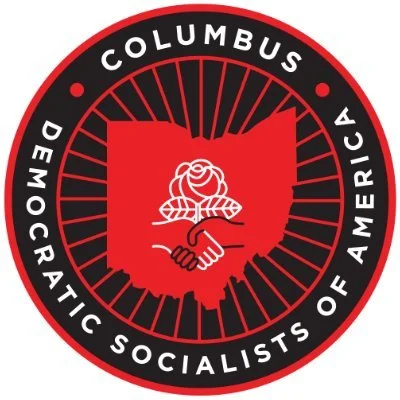

Columbus DSA 2025 General Election Voting Guide
COLUMBUS — The Columbus chapter of the Democratic Socialists of America (DSA) issues the following recommendations to residents of Columbus.
- In For Issue 1, YES.
- In For Columbus School Board, vote MOUNIR LYNCH.
- In For Columbus City Council, district 7, vote JESSE VOGEL.
A detailed rationale for each recommendation follows.
Disclaimer: No recommendations made here are endorsements. These recommendations are tactical considerations meant to minimize the harm likely to occur to the working class here and abroad as a result of this election.
Do you lament the lack of socialist, abolitionist, anti-ICE and pro-BDS candidates running for office? You can be a part of changing that, whether by running for office yourself or helping us to discover and cultivate future socialists-in-office. To advance the democratic socialist movement in Central Ohio, join DSA today: www.columbusdsa.org/join/.
Endorsement for Columbus School Board
Mounir Lynch
Columbus DSA is proud to endorse Mounir Lynch for Columbus School Board. Lynch sought our chapter’s endorsement and was thereafter endorsed by a democratic vote of the chapter. From our conversations with him, Lynch has demonstrated that he shares our ideals. He will seek to prioritize community voices, students, families, educators, and neighbors in shaping schools with transparent processes and district-wide advisory boards that will meet at convenient times and locations. He wants to make teachers and staff “partners” with the board and will work to direct resources where they’re most needed. He wants to end the inequality in funding to schools and will work to provide all students with a world-class education. Lynch will fight for better pay, not only for teachers, but for all staff, including school bus drivers, cafeteria workers, aides and other support staff. Furthermore, Lynch has and will continue to speak out against developers who steal from our schools through tax abatements, and against the privatization of education. As he has said, “Our public schools belong to all of us.” We support Lynch’s vision for safe, inclusive schools where all students and workers are valued and respected.
Recommendation for Columbus City Council, district 7
Jesse Vogel
Columbus’s City Council has been bought and paid for by the local Democratic Party for decades. The local party has opposed efforts to make the process of electing councilmembers more democratic and has insisted on appointing or endorsing their own chosen candidates to maintain their hold on power in Columbus. (Our chapter’s Democracy in Columbus Priority Campaign seeks to change this.) Jesse Vogel’s campaign is part of the struggle against the established Democratic Party’s stranglehold on power in this city. Vogel’s vision is positive and certainly superior to the vision offered by the local Democratic Party leaders and his opponent, Tiara Ross. Vogel has not sought our chapter’s endorsement, and we are not granting it. But we do acknowledge that he is far superior to his Democratic Party endorsed opponent, and as a result, we recommend that our members vote for Jesse Vogel for city council.
Recommend “Yes” vote for Issue 1
We recommend a Yes vote on Issue 1, a .05-mill increase of an existing levy over ten years to fund the Alcohol, Drug and Mental Health (ADAMH) Board. This increase will strengthen key services available to all, with a particular focus on helping the uninsured and underinsured with mental health and addiction crises and recovery services. Key recipients of the levy dollars are the new Franklin County Crises Core Center for adults, Youth Prevention services, Treatment Access, Recovery and Support Services, Housing Programs, Family & Caregiver Support, and other Specialized Services for mental health and addiction issues.
No recommendation for other Issues
We cannot, in good conscience, recommend any other issues, due to lack of specific information from the City as to how funds, coming from the largest request for bond packages ever, will benefit the average citizens of Columbus.


New DSA National Endorsement Criteria
At DSA’s 2025 National Convention, DSA members passed CR-05, the NEC Consensus Resolution, a set of electoral resolutions authored by NEC members. Among those was “Focused National Endorsements,” a resolution establishing new, concrete, specific, and immediately actionable criteria for DSA”s national endorsements. The resolution defines this criteria in aim of focusing national DSA endorsements on electoral campaigns where DSA can make concerted national action to intervene in elections. As explained by the resolution, these endorsement criteria may result in fewer, more selective endorsements by the national organization, but will allow for more meaningful endorsement experiences and interventions.
The criteria for DSA’s national endorsement applications will ask that candidates:
- Have a demonstrated history of leadership in their chapter, participation in DSA’s internal life, and attending DSA events
- Commit to uphold DSA’s national policy platform, Workers Deserve More, and DSA’s national priorities, campaigns and initiatives
- View themselves as socialist organizers first, and legislators second
- Openly and proudly identify with DSA and Socialism, including by:
- Expressly encouraging people to join DSA
- Identifying publicly as a “Socialist” or “Democratic Socialist”
- Aligning their branding, messaging, and/or color scheme with DSA
- Commit to grow their DSA chapter and develop DSA leaders through their campaign
- Demonstrate interest in receiving a national endorsement
- Commit to caucusing with fellow elected DSA endorsees and socialist-in-office committees, where applicable
The resolution also specifies that national endorsement should also consider:
- How DSA’s national endorsement would significantly impact the odds of success, through national fundraising, publicity, and volunteer support
- Opportunities to build DSA’s public profile and recruit more members through elections with national political significance
- The campaign’s stance on key political issues and strategic questions important to DSA, such as:
- The Democratic Party, political independence and party-building
- DSA’s path to power and the transition to a socialist society
- Palestinian liberation
National endorsements will authorize DSA to provide candidates with the following support:
- DSA communications will prioritize highlighting the candidates social media and sharing their posts
- The NEC will host national phone banks and encourage nearby DSA chapters to journey to canvass for these candidates
- DSA and NEC will prioritize fundraising support, when allowed by compliance, prioritizing national donations from members to the campaigns
- At least one of DSA’s national co-chairs will be encouraged to visit the chapter of the candidate, meet with the chapter and candidate, do public facing communications for the campaign, and engage in chapter and campaign building activities, including canvass for the campaign
- DSA’s NEC will support the campaign through all relevant logistical infrastructure available at the time, including mentorship, electoral academy, and more
- DSA’s national committees will provide logistical and policy support
As a result of this measure, the NEC’s endorsement and educational materials will be adapted to communicate this new endorsement criteria. As your campaign or chapter apply for local endorsement, please consider applying for national endorsement if your campaign meets this criteria and would benefit from strategic national intervention and support.
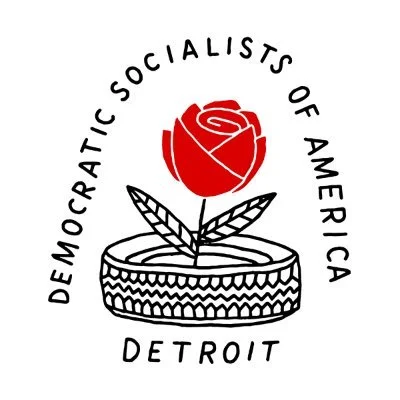

When The Boss Says, “Unions are Great, But Not For Us”
By Rob Switzer
This article was originally published in the blog for Emergency Workplace Organizing Committee (EWOC).
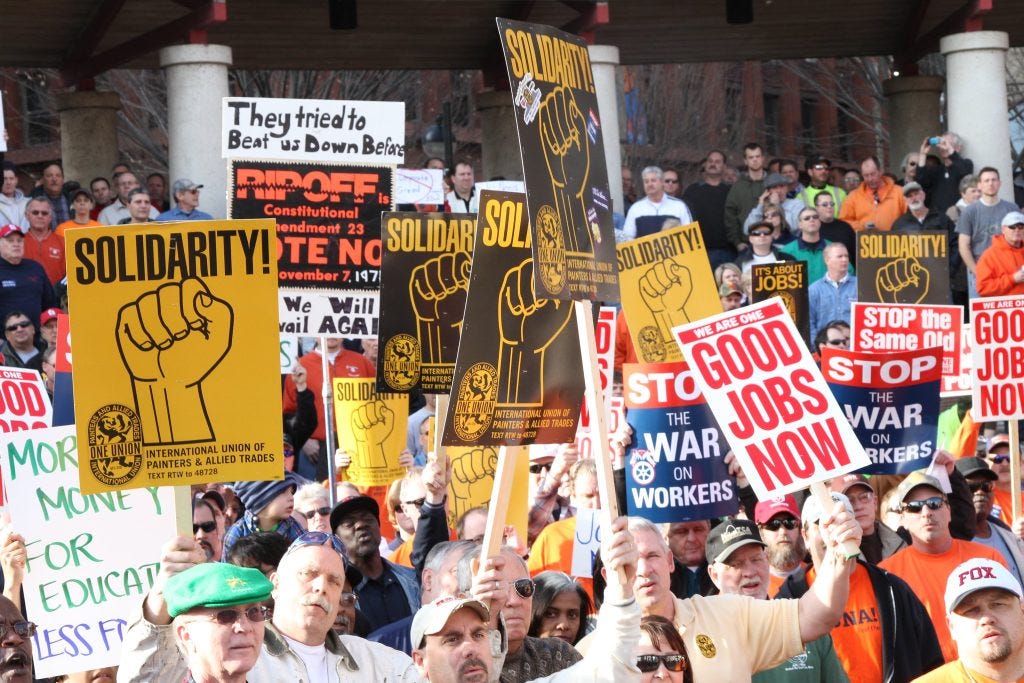
Bosses often tell workers, “Unions are fine, but they’re not right for our workplace.” This argument assumes a stereotypical view of unions and the types of workplaces in which they think unions are common. When people think of unions and worker power, they often think of factories, particularly the UAW and the auto industry. We think of electricians and the IBEW. We think of public-sector workers like letter carriers, who are unionized at a much higher rate than other sectors.
But in reality, workers have won unions across a spectrum of different workplaces: different industries, different sizes, even remote workplaces. And they have all seen the benefits of uniting and collectively bargaining with the boss. Bosses say that unions aren’t right for their workplaces, but the reality is that unions are right for every workplace.
Why should restaurant workers unionize?
Many grocery store chains are union shops. For example, the majority of workers at Kroger locations are organized under the United Food and Commercial Workers (UFCW) union. But a growing number of workers at restaurants and other food service locations are also organizing.
Perhaps the best example of this is Starbucks. Starting with a location in Buffalo, New York, in 2021, workers began a wave of unionization within the coffee-shop chain that has since resulted in over 600 stores following suit, now representing over 14,000 employees. Their union, Starbucks Workers United, is still fighting for contracts, but worker solidarity in these stores — and the legal protections provided by unionizing — have benefitted these workers in various ways.
In many locations, lawsuits and rulings from the National Labor Relations Board (NLRB) have forced Starbucks to rehire workers they unjustly fired. At a Brooklyn location, striking workers forced the store to address mold problems and a bedbug infestation, resulting in the company paying for home bedbug inspections. In Boston, striking workers forced the store to address scheduling complaints and to dismiss an abusive manager. In a union location in Michigan, a barista reported that the staff marched on management to complain about an abusive manager, and that the manager was promptly let go.
Workers at smaller chains and independent establishments can also benefit from unionization. In 2015, an organizing effort began among workers at Burgerville fast food restaurants, a Pacific Northwest chain with around 40 locations. In 2021, the workers won a contract and signed an agreement. In the union’s celebratory Facebook post, they wrote, “We did it! … Upon ratification we will have ended at-will employment, ended unfair scheduling, won tips for workers … free shift meals, $1 wage increase after our first strike in October 2019, 5 paid holidays and in-store tipping system.”
Can warehouse workers unionize?
One of the fastest growing and most important employers in the United States is Amazon. As of this writing, upwards of 10,000 Amazon workers are unionized, including workers at a Whole Foods location (which is Amazon-owned). Efforts to unionize are underway at more Amazon warehouses and delivery stations across the country.
Amazon has made the argument that “unions aren’t right for our workplace” part of their public relations strategy. In 2021, Mary Kate Paradis, an Amazon spokesperson, said, “As a company, we don’t think unions are the best answer for our employees. Our focus remains on working directly with our team to continue making Amazon a great place to work.” Paradis made this statement in response to a federal judge’s holding that Amazon had broken the law in its battle against organizing workers in New York.
Amazon’s ardent anti-union stance continues, and workers are still struggling to obtain a contract, but they have made some gains despite the pushback. Worker actions have won pay increases in some facilities, improved safety precautions, and more consistent policies on worker breaks and mandatory overtime.
I’m a white-collar worker. Can we have a union?
White-collar workers are also getting in on the action. One of the most surprising sectors in recent years to see a unionization push has been video game studios. Just last year, 461 workers at Microsoft’s ZeniMax Studios announced they were unionizing with the Campaign to Organize Digital Employees-Communications Workers of America (CODE-CWA). Earlier this year they ratified a contract that included a 13.5% across-the-board wage increase, protections against the use of artificial intelligence to replace their work, and general worker protections like formal grievance procedures and an end to at-will employment.
ZeniMax is not alone. There have been union wins at powerhouse gaming studios like Sega of America, Activision, Blizzard, and BioWare. This particular wave of unionization has extended beyond just the U.S. and large studios. Developers at ZA/UM studios, known for the cult PC hit “Disco Elysium,” last month became the first unionized gaming studio in the United Kingdom.
These wins in the gaming industry, which long ago surpassed the film industry in terms of overall revenue, serve as a model to white-collar office workers everywhere. Just because you work hunched over in front of a computer rather than on your feet doesn’t mean collective action won’t benefit your workplace.
Unions for every workplace
Remote workers also benefit from unions. These workers face the unique challenge of having to build their union despite not being physically present with each other every day. For example, telehealth workers at University of California-San Diego — organized under University Professional and Technical Employees-Communication Workers of America (UPTE-CWA) — won some major concessions this year, including agreements on the right to remain remote and not be forced to commute, consistent scheduling, and formal grievance procedures.
All kinds of workplaces have seen some level of increased labor activity in recent years, followed typically by improved conditions for its workers. Recent labor wins include:
- Museum workers: Staff at the Philadelphia Museum of Art recently unionized.
- Grad students: Private schools like Columbia and Harvard and public schools like Wayne State University have recently seen graduate students at the bargaining table to improve their wages and conditions.
- Budtenders: Workers at many cannabis dispensaries are getting in on the labor movement, including Exclusive in Ann Arbor, Michigan, which is organized under UFCW.
- Climbing gym workers: Workers at DYNO Detroit Climbing and VITAL Climbing Gyms in New York recently formed unions.
- Veterinarians and veterinary technicians: Veterinary Specialists and Emergency Services in Rochester, New York recently formed a union.
Workplaces of all different sizes in all different industries have embraced collective bargaining and are seeing the benefits. So when your boss or your anti-union co-worker says “unions are fine, but they’re not right for our workplace,” ask yourself: what’s so different about your workplace? If a union can work for burger joints, video game studios, and remote jobs alike, why wouldn’t it work for yours?
Rob Switzer is a UFCW butcher and shop steward in Detroit, Michigan. He is a member of Metro Detroit’s chapter of Democratic Socialists of America and co-editor of their publication “The Detroit Socialist.”
When The Boss Says, “Unions are Great, But Not For Us” was originally published in The Detroit Socialist on Medium, where people are continuing the conversation by highlighting and responding to this story.
